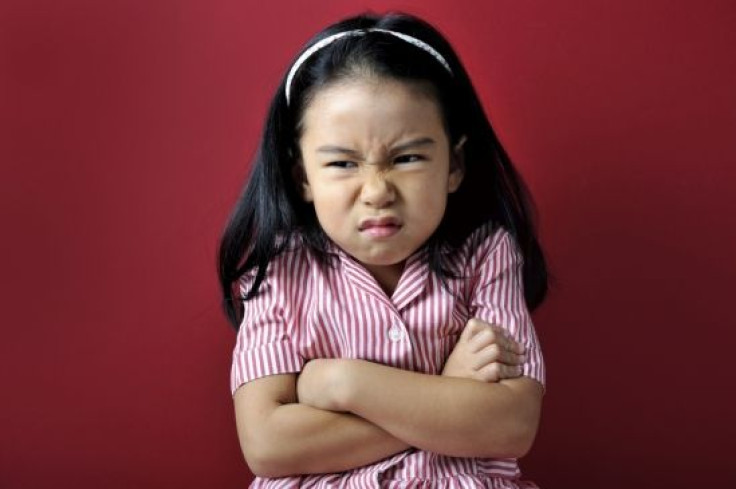Face Reading: Strength Is The Secret Behind The Expression Of Anger On Your Face

The anger face — lowered brow, thinned lips, flared nostrils — is a universal human expression. Not only is it cross-cultural, but when congenitally blind children who have never once seen another person become angry, they make this very same expression. Biologists have hypothesized the anger face is simply an arbitrary set of features that evolved to signal aggression. However, researchers at University of California, Santa Barbara, and Griffith University in Australia say there’s nothing arbitrary about it.
Each aspect of the anger face, their new study proves, suggests greater physical strength, which in turn increases an angry person’s bargaining power. "Since people who are judged to be stronger tend to get their way more often, other things being equal… the explanation for evolution of the form of the human anger face is surprisingly simple — it is a threat display," said Dr. Aaron Sell, a lecturer at the School of Criminology at Griffith University in Australia and lead author of the study.
Break It Down to Understand
Seeing bared fangs during a conflict, an animal may inwardly tremble, fearing the strength of their opponent. In fact, all animals show displays of strength as a way to resolve conflict in their favor. We humans are not above such behavior: We, too, assess a competitor’s ability by monitoring cues of physical power that register on the face. (Perhaps the toothy smile, commonly used as a greeting in America, but not in Europe or Asia, is a subtle version of bared fangs.) For the current study, the evolutionary psychologists proposed that if you broke down the muscle movements behind a single person’s anger face, each would increase an observer’s assessment of the person’s strength.
To begin their experiment, the researchers broke down the human anger expression into seven distinct muscle groups contracting in a stereotypical manner. Then, they focused on the most common feature of the anger face, the lowered brow. After creating a computer-generated “average” human face, they digitally morphed the expression in opposite directions to produce two separate photos, with one resulting photo showing a lowered brow, the other a raised brow. Despite the adjustments, neither of these two faces appeared angry. However, when participants viewed the two faces, they said the lowered brow face looked like it “belonged to a physically stronger man,” Sell explained.
Next, the researchers singled out each of the other major components of the anger face — raised cheekbones (as in a snarl), lips thinned and pushed out, the mouth raised (as in defiance), the nose flared, the chin pushed out and up — and created similar computer-generated faces. As with the lowered brow, they adjusted the faces to express an individual muscle contraction and paired it with the opposite expression. Time and again, when participants observed any photo with a component of the anger face, they judged that photo as belonging to a person who was physically stronger when they compared the paired opposite.
“What is most pleasing about these results is that no feature of the anger face appears to be arbitrary; they all deliver the same message," explained Dr. John Tooby, professor of Anthropology, UC Santa Barbara. In fact, each of the seven components having the exact same effect strengthens the researchers’ argument. "In the final analysis, you can think of the anger face as a constellation of features, each of which makes you appear physically more formidable," Sell said.
Source: Sell A, Cosmides L, Tooby J. The human anger face evolved to enhance cues of strength. Evol Evolution and Human Behavior. 2014.



























